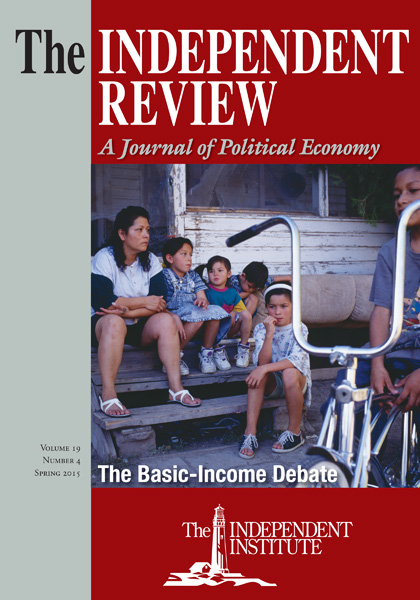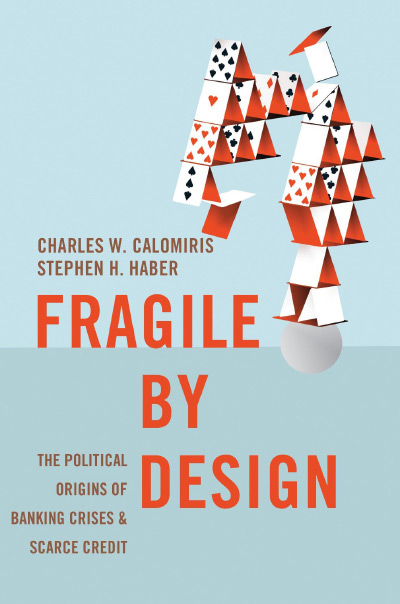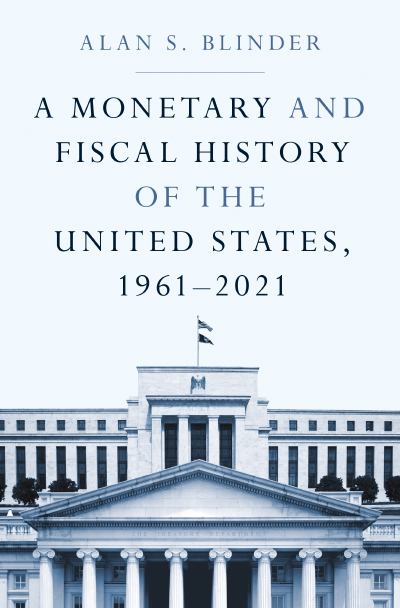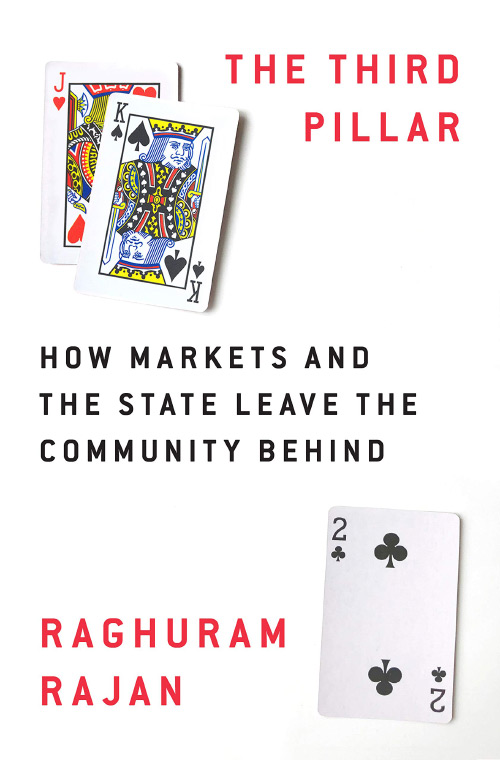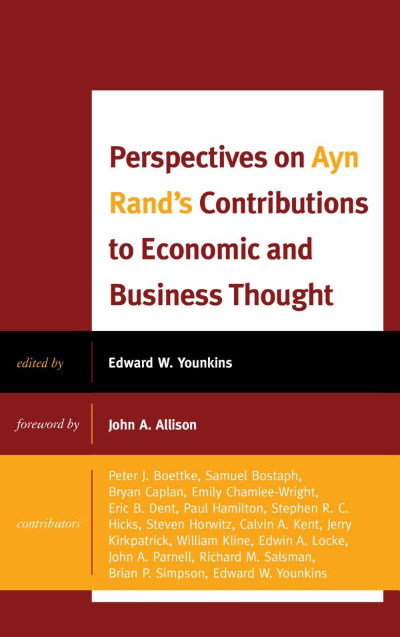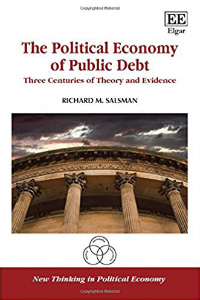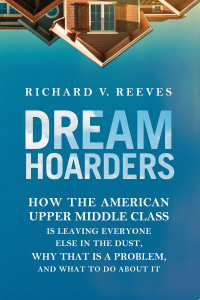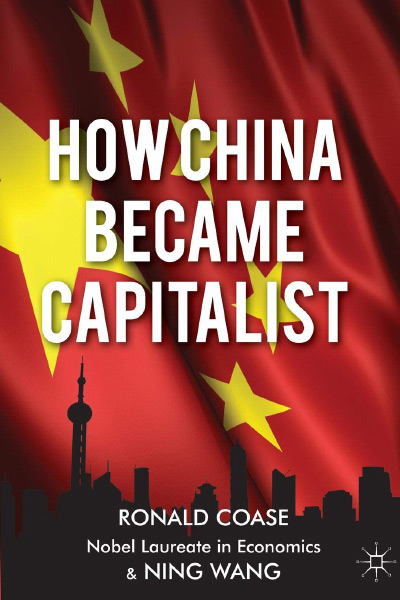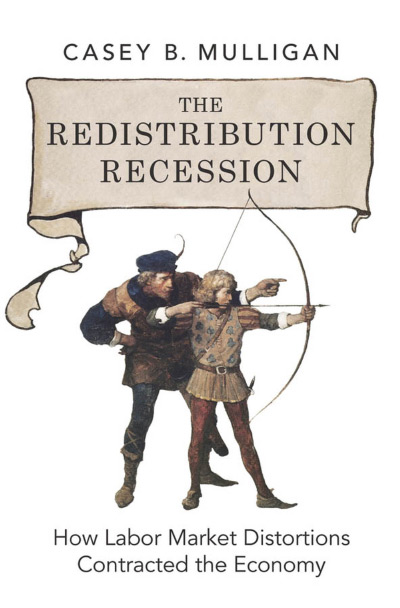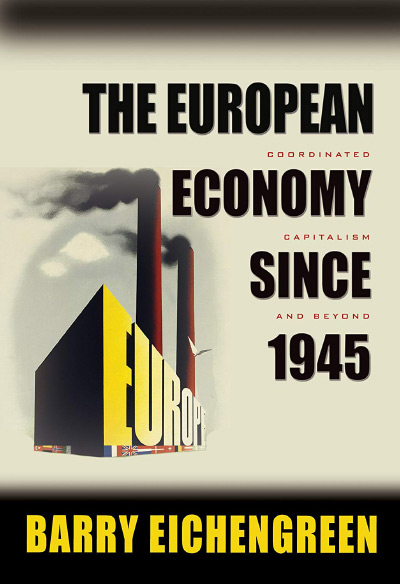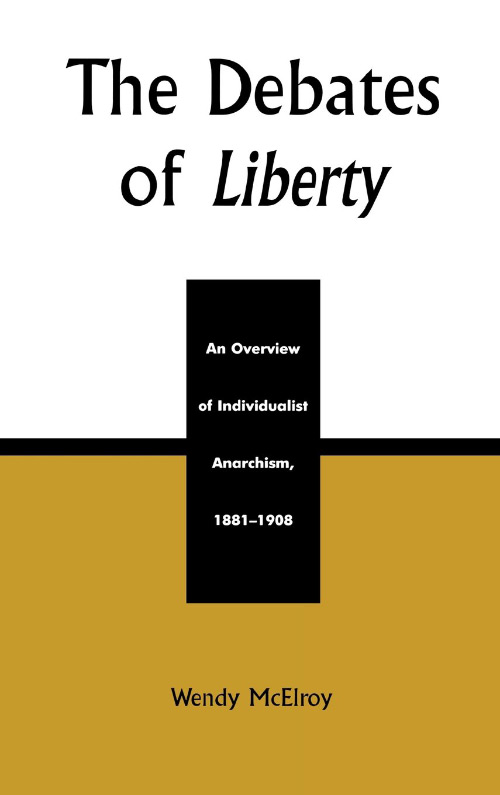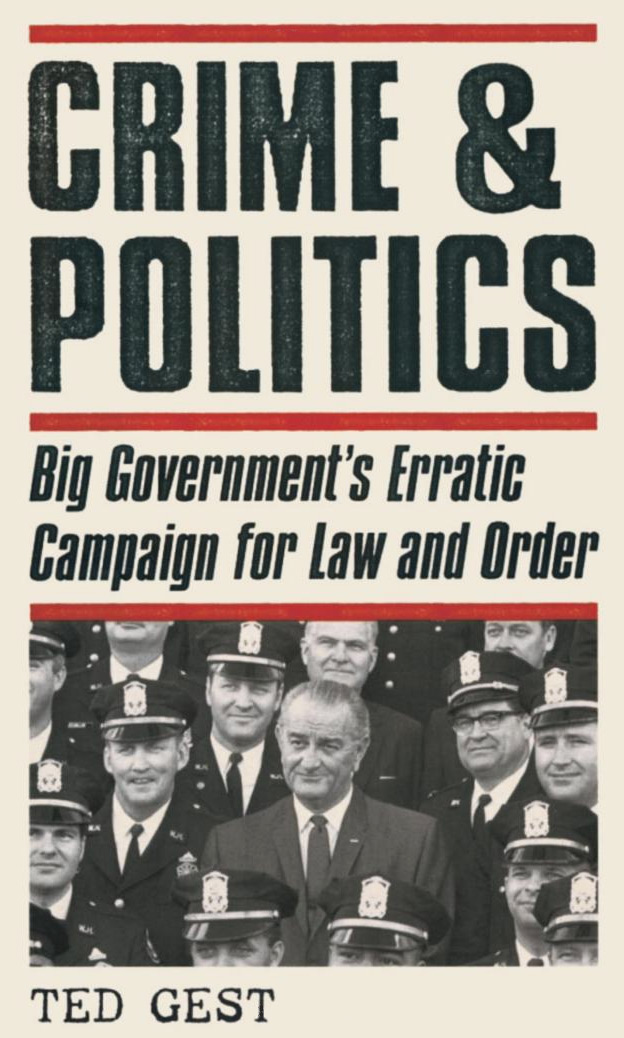Fragile by Design is an excellent and provocative book. It is an amalgam of economic history and theory combined to illuminate banking and financial history with special relevance to the recent collapse in American banking. My review is somewhat idiosyncratic; I think that the authors, Charles W. Calomiris and Stephen H. Haber, should have written a less lengthy book that concentrates on the history, antecedents, and analysis of the 2008 financial crisis. Their economic and financial histories of Mexico and Brazil, although excellent in themselves, add little to the analysis of the 2008 meltdown; my remarks concentrate on the portions of the volume that elucidate the events of 2008.
The first section, “No Banks without States and No States without Banks,” contains five chapters dealing with the systematic relationship between banks and states and a banking history of the United Kingdom. It lays the foundation of the story, addressing the issue encapsulated in the title of chapter 1: “If Stable and Efficient Banks Are Such a Good Idea, Why Are They so Rare?” Calomiris and Haber argue that without political authorities’ acquiescence and assistance neither banks nor advanced states can exist. Because of the random exigencies of wars and other forms of statecraft, no nonprimitive state can exist for long without immediate access to capital that only functioning banks can provide. Banks, in turn, rely on the state’s enforcement powers to ensure bank creditors (depositors) that they will not be robbed by the banks and, in turn, to enable banks to enforce contracts with those who borrow from them.
The existence of adjudicators and enforcement mechanisms is the sine qua non for the existence of banking; it is what makes banking an exercise in political economy. Banking obviously requires both bankers and government; complexity is added because the number of participants in the “game of bank bargains” (a somewhat unfortunate phrase repeatedly used) is large with conflicting interests. Among the participants in the “game” are bankers (composed of insiders and other investors), depositors, borrowers, politicians, and the nonbanking public. The overarching theme that unites these disparate groups is a desire to shape the institutional environment to favor their particular interests. Which groups are best able to mold the institutional environment depends on the nature of the politics and the prevailing rules.
The authors dichotomize the political environments into two sets: one consists of various types of autocracies; the other contains democracies. Political democracies are divided into two groups: liberal democracies (limited constitutional government) and populist democracies, where constitutional limits are either nonexistent or very malleable. The authors argue that a populist democracy that is not a welfare state faces a great deal of political pressure to use the banking system to reallocate credit/ resources to politically advantaged groups. In the context of American banking history, the United States had a federal government that was severely restricted by the Constitution (until the 1930s), but the chartering and regulation of banks were almost exclusively under the domain of the states. This meant that in the United States the “game of bank bargains” was played primarily in state capitals until the electronic banking revolution of the 1980s.
The remainder of the first section is devoted to an economic history of banking and statecraft in the United Kingdom. It is a lucid and thought provoking interpretation of British banking history and the evolution of the Bank of England. Anyone who wishes to understand this history should become familiar with these chapters. My only objection to this history concerns the authors’ treatment of World War I and its aftermath. They assert that the competition between Britain and Germany for “global dominance” (p. 129) led to Britain’s entrance into the war; nowhere do they entertain other interpretations. This is an error of omission. (For a diametrically opposed view, see Niall Ferguson, The Pity of War: Explaining World War I [New York: Basic Books, 1999].) More important to their banking history is their treatment of Britain’s resumption of the gold standard. In “The Economic Consequences of Mr. Churchill” (in Essays in Persuasion [London: MacMillan, 1931], 244–70), John Maynard Keynes predicted the economic dislocation that actually accompanied fixing the gold price and exchange rates at their prewar rates of one pound sterling equal to U.S.$4.86. Because of the greater wartime inflation in Britain than in the United States, the pound was substantially overvalued against the dollar and gold at the prewar exchange rate; this meant that British exports were not competitive in many markets, and imports into Britain were undervalued. In Fragile by Design, the authors ascribe the economic and financial difficulties that Britain faced to “a fixed-exchange rate in which central banks exchanged each other’s currencies at a price tied to gold. . . . This system resulted in an over valuation of the British pound” (p. 135). This conclusion is misleading at best; the British could have chosen a pound price of gold that did not overvalue the pound (undervalue gold), or they could have announced that they were returning to the prewar exchange rate at some time in the future (as the United States did in the aftermath of the Civil War). But they did neither; the chancellor of the Exchequer (Winston Churchill) instead followed his economic instincts, which, as usual, were divorced from any concept of economic principles. Under Churchill’s direction, the Gold Standard Act of 1925 imposed an immediate resumption of the gold standard at prewar rates of exchange. This resumption resulted in a severe economic depression, which ultimately led to Britain formally abandoning the gold standard in September 1931. Again, it was neither necessary nor prudent to set the price of the pound higher than the contemporaneous market price; it was the deliberate attempt to force deflation that caused the economic dislocation in the aftermath of the return to the gold standard.
These blemishes aside, the next section more than compensates for any qualms generated by the authors’ depiction of banking during World War I and its aftermath. The second section, “The Cost of Banker–Populist Alliances: The United States versus Canada,” has a superb history and analysis of the U.S. banking system contrasted with that of Canada. In the United States, banks were chartered by the individual states before the National Bank Act of 1863. (With the prominent exceptions of the federal charters that the two incarnations of the Bank of the United States had.) A bank charter was literally a license to print money; politicians who granted charters made sure that some of the profits were channeled to themselves or to individuals or to groups with political power. Alliances between bankers and powerful borrowers (some of whom were also bankers; bank insiders could be a bank’s largest borrowers) led to the creation of a system of unit banks. Banks were allowed only one physical presence (one office); bank branches were forbidden—thus the term unit banks. This increased the fixed costs of banking because costs were spread over fewer depositors and borrowers. Nevertheless, many banks had considerable monopoly power within a region (a bank’s market region was delineated by the high costs of transportation and information about credit worthiness). Because unit banks had circumscribed markets, locally rich and powerful merchants and land barons were guaranteed access to credit at most times. Because of the high costs of transport, in any given locality most depositors could either put their money in a local bank or not use banks at all. The unit banking system was inherently unstable because banks could diversify neither loan portfolios nor deposits. When the local economy soured, and depositors sought to withdraw their funds from the banks, borrowers were simultaneously facing difficulties in paying bank debts. These elements were the foundations of bank instability in the United States. Over the past 180 years, the United States has had fourteen major banking crises; in contrast, Canada, which has a system of few national banks with multiple branches, has had no banking crisis since 1840.
Although the American system of unit banking makes for an entertaining history, it is also an extraordinary indictment of American politics. It should be emphasized that volatility in the United States was due to a system that relied on small unit banks that precluded diversification of assets and debts. American banks had local monopolies, but the profits from greater spreads between lending and borrowing rates were at least partially offset by the higher fixed costs per dollar of deposits and the increased risk of failure that small bank monopolies faced. In Canada, the central-government control of bank charters allowed nationwide branch banking; the system of few banks with many branches fostered competition between banks, which benefitted both depositors and borrowers. The spread between borrowing and lending rates in Canada was smaller than the spread in the United States; Canadian depositors received higher return on their savings than Americans did, and Canadian borrowers paid lower interest rates on their debts than American debtors did. In Canada, the fixed costs of banking were spread over many more customers (debtors and creditors) than they were in the United States, which reduced the costs of banking; competition among Canadian banks passed these efficiency gains on to their customers
Contemporary expert opinion knew that the unit-bank system was the reason behind chronic American bank panics and crises. The Aldrich–Vreeland Act of 1908 created the National Monetary Commission which clearly recognized the deficiencies in a system of unit banks, but unit banking was thought to be too well entrenched in politics, practice, and law to be modified. Instead, in 1913 the desire to reduce chronic instability in American banking was met by the creation of a central bank—the Federal Reserve System. (By contrast, Canada, which has had no panics from 1840 to the present, had no central bank until 1934.) The Fed failed in its mission to eliminate systemic bank failures and financial crises. Unit banking continued with occasional modifications that attempted to address particular problems; the modifications frequently exacerbated bank instability. In particular, federal deposit insurance introduced during the Great Depression to insure small depositors against bank failures metamorphosed into a system where virtually any amount can be insured by opening different accounts. The insurance of bank deposits guaranteed by the Federal Deposit Insurance Corporation created moral hazards: depositors quite logically regarded all banks as equally risky, so they disregarded bank solvency in their choice of a repository for savings. If a bank’s asset portfolio became less than its debts, then it was rational for the bank to make even riskier loans hoping that the returns on high-risk loans would let the bank avoid bankruptcy. If the gamble succeeded, the bankers did well; if the strategy failed, the banks were going bankrupt anyway. Deposit insurance guaranteed that the “living dead” (the term used to describe them) could always attract more deposits.
The American system of banking continued until the 1980s, when a series of events reduced the viability of unit banking. One notable technological change that negatively affected unit banks was the automatic teller machine (ATM), which dispensed cash and received deposits in the absence of human assistance. When the Supreme Court ruled in Independent Bankers Association of New York v. Marine Midland Bank (583 F. Supp. 1042 [1984]) that ATMs were not branches of a bank, the value of bank charters fell in states where branch banking was prohibited. The decline in the value of unit banks was exacerbated by other events that led to further declines in bank values. Falling values led the states to amend state laws to allow branch banking and mergers to bolster bank profitability. The resultant merger frenzy stopped at state borders because federal laws governed interstate bank mergers.
In 1977, Congress passed the Community Reinvestment Act (CRA) to force banks to “reinvest” in communities that were “underserviced” in their market areas. In practice, this meant that banks were encouraged to lend to less-qualified borrowers who were buying houses in depressed neighborhoods. The CRA caused little harm before the late 1990s because it was treated pro forma: essentially all that banks did was to agree with the CRA’s goals and file paperwork to that effect. The paperwork was summarily prepared, filed, and ignored. The election of Bill Clinton changed all that; under the Clinton administration, community activist groups were allowed to testify before regulatory groups in favor of or against bank mergers. To appease activist groups, banks had to make a substantial commitment to “underserved” borrowers identified by the activists. In 1999, Clinton stated that of all the CRA loans that existed then, more than 95 percent had been made during his administrations (pp. 217–18). Strangely enough, he was telling the truth; the cumulative commitment in the last year of the George H. W. Bush administration was $43 billion, but in Clinton’s last year as president the cumulative commitment of CRA loans was $1.3 trillion.
To achieve these goals, activist groups were allowed to select some of the recipients of the loans generated by the CRA. Noteworthy among these groups was the Association of Community Organizations for Reform Now (ACORN), notorious for its solicitude in advising pimps (actually undercover reporters). Borrowing standards fell to new lows, but these relaxed standards could not be limited to just the poor and were made available to all. A family that could legitimately finance a $200,000 mortgage could apply for a mortgage for a much more desirable dwelling that cost $350,000. Verification of the ability to pay either through income or assets was typically not required. Government-sponsored enterprises (Federal Home Loan Mortgage Corporation and Federal National Mortgage Association, also known respectively as Freddie Mac and Fannie Mae) became complicit, soliciting loans that could not meet prudential standards; the government-sponsored enterprises encouraged banks to become more highly leveraged. Subpar loans were bundled to produce mortgage-backed securities, which the rating agencies (with government encouragement) conveniently analyzed with questionable (“deeply and observably flawed” [p. 267]) models to rate the collateralized mortgage obligations as investmentgrade bonds. Many banks bought these securities for their own portfolios; after all, the bonds were investment grade and had attractive yields. But realistically these securities were extraordinarily risky, and when they failed, their failures caused havoc worldwide.
Calomiris and Haber emphasize that these events occurred because it was in the self-interest of players in the “game of bank bargains” to create subpar loans, bundle them together, and market and sell them as investment-grade securities. Populists unfettered by constitutional restrictions pandered to the press’s and the populace’s preferences for policies to help the politically connected impoverished. Lowered financial requirements spread throughout the U.S. housing market, creating an enormous real estate bubble that eventually burst. Common sense and financial prudence were routinely ignored; fortunes were made and lost. But foolishness is not a criminal offense. What we have here is an illustration of rational ignorance. Voters choose politicians and parties; the real estate bubble and financial collapse were ultimately due to the policies chosen and implemented by politicians elected by the people. But the incentives facing individual voters make it irrational for voters to spend significant resources examining the nuances of various political issues. One vote out of many millions is not going to affect an election; consequently, rational voters will not devote resources to a thorough examination of issues. Instead voters will make choices on nonintellectual margins, such as looks, personality, sense of humor, ethnic identity, name recognition, and a host of other categories that political and marketing consultants may devise. A populist democracy reflecting the will of the people is chosen by an electorate that is rationally ignorant. Perhaps we should get over it.
These are criticisms not of the authors, but of the way the modern system of democratic governance has evolved. Fragile by Design is an exceptional book; its explanations are clear and lucid. It educates us on the importance of history, incentives, and analysis in explanations of financial meltdowns. The authors are to be commended.

